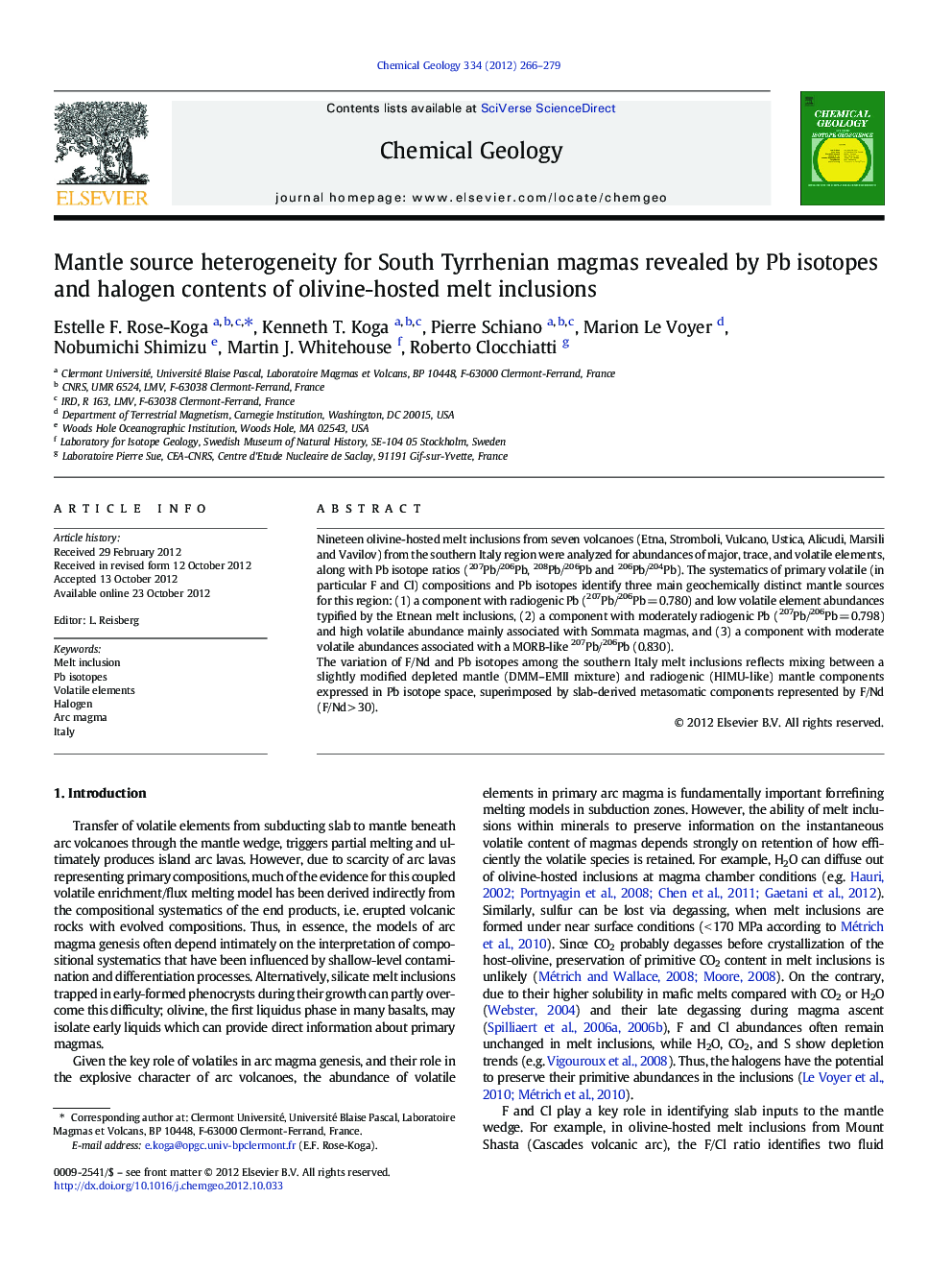| Article ID | Journal | Published Year | Pages | File Type |
|---|---|---|---|---|
| 4699187 | Chemical Geology | 2012 | 14 Pages |
Nineteen olivine-hosted melt inclusions from seven volcanoes (Etna, Stromboli, Vulcano, Ustica, Alicudi, Marsili and Vavilov) from the southern Italy region were analyzed for abundances of major, trace, and volatile elements, along with Pb isotope ratios (207Pb/206Pb, 208Pb/206Pb and 206Pb/204Pb). The systematics of primary volatile (in particular F and Cl) compositions and Pb isotopes identify three main geochemically distinct mantle sources for this region: (1) a component with radiogenic Pb (207Pb/206Pb = 0.780) and low volatile element abundances typified by the Etnean melt inclusions, (2) a component with moderately radiogenic Pb (207Pb/206Pb = 0.798) and high volatile abundance mainly associated with Sommata magmas, and (3) a component with moderate volatile abundances associated with a MORB-like 207Pb/206Pb (0.830).The variation of F/Nd and Pb isotopes among the southern Italy melt inclusions reflects mixing between a slightly modified depleted mantle (DMM–EMII mixture) and radiogenic (HIMU-like) mantle components expressed in Pb isotope space, superimposed by slab-derived metasomatic components represented by F/Nd (F/Nd > 30).
► We measured in situ Pb isotopes, H2O, CO2, F, Cl and S in olivine-hosted melt inclusions. ► There is a HIMU-like radiogenic Pb source under South Tyrrhenian volcanoes. ► F/Nd–Cl/Nb systematics rule out recently subducted AOC as for this radiogenic Pb source. ► Low F/Nd results from slab dehydration. ► The fluid, coming from the slab, metasomatizes and raises F/Nd of the mantle wedge.
